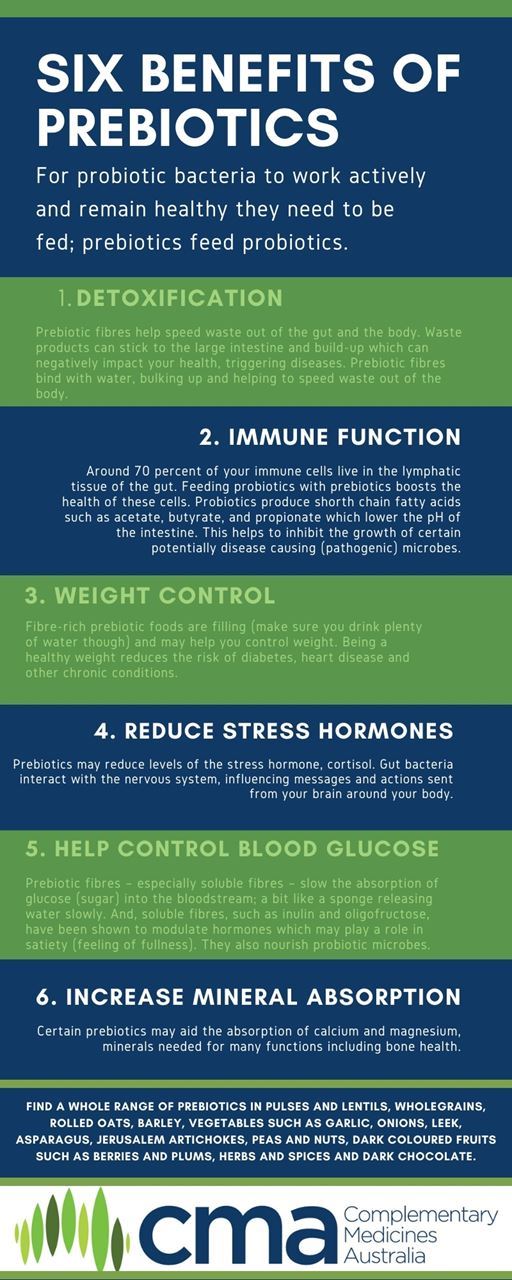Your body is home to around 100 trillion bacterial cells (and some fungi and viruses) the majority of which live in the gut; this is known as the gut microbiome.

Each person has a unique microbiome, and like all living things, these organisms must eat. Prebiotics are the foods that nourish your microbiome.
Prebiotics are plant fibres that the human body cannot digest – including resistant starch and phytochemicals and polyphenols found in vegetables, whole grains, nuts, seeds, and legumes.
Most nutrients are absorbed in the small intestine, but because the body cannot digest prebiotics, they enter the large intestine mostly untouched. Here they provide food for beneficial probiotic bacteria. These bacteria ferment prebiotics (i.e. extract energy by breaking down foods in the absence of oxygen). As a by-product, the bacteria produce chemicals called short-chain fatty acids (SCFA) which are essential for gut health. The SCFAs acetate, butyrate, and propionate lower the pH of the intestine, helping to inhibit the growth of certain pathogenic (potentially harmful) microbes.
Gut health is linked with general wellbeing so an imbalance of gut bacteria may lead to the build-up of toxic by-products and inflammation, both of which negatively impact wellbeing. Around 70 per cent of immune cells are found in the lymphatic tissue of the gut.
Cells in the gut help protect the microbes in the intestines. They attack pathogenic microbes and foreign substances. A healthy immune system also suppresses inflammatory responses to non-pathogenic (non-harmful) foreign substances, including food. Feeding probiotics with prebiotics boosts the health of these cells.
Types of prebiotics include
Resistant oligosaccharides
These are the most studied types of prebiotics, and they promote the growth of a type of bacteria called Bifidobacteria. Nearly 50 species of Bifidobacteria are known to exist, and each one has different functions and health benefits.
Bifidobacteria produce SCFAs, which may also help to control hunger. These probiotics also help produce other necessary chemicals, including B vitamins and healthy fatty acids.
Wheat, rye, chickpeas, lentils, onion, and garlic provide resistant oligosaccharides.
Non-starch polysaccharides
These are found in a variety of plant-based foods such as rye, wheat, barley, oats, apples, and plums.
Resistant starch
A prebiotic found to promote the production of the SFCA butyrate. Find resistant starch in lentils, peas, beans and rolled oats. The resistant starch content of rice and potatoes increases once cooked and then cooled.
Phytochemicals
Find these in plant foods such as berries, plums, herbs and spices, artichokes, red onions, dark chocolate, and nuts.
Each person has a uniquely different microbiome, so it is difficult to determine the precise effects of eating prebiotics on the production of the amounts of SCFAs. What is clear, though, is that enjoying plenty of prebiotic foods will help to boost SCFA production.



